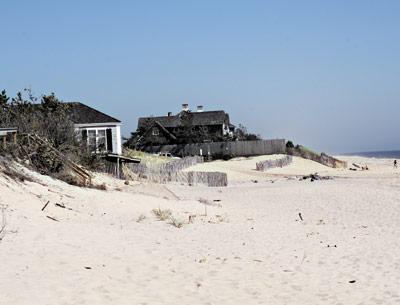Call Goes Out for Feedback
Call Goes Out for Feedback
A meeting on East Hampton Town’s comprehensive wastewater management plan, which was to have been held in Montauk on Wednesday, will be rescheduled.
Consultants hired to develop the plan, which will include recommendations regarding the town’s septic waste-treatment plant, individual septic systems, and ongoing water-quality monitoring, are planning a series of meetings to focus on the needs and issues of individual hamlets.
They also plan to form ad hoc project advisory groups, with “interested and knowledgeable professionals” as members, to review materials generated by the consultants and provide feedback. Members of the public will be invited to listen in and observe.
A group focusing on the science of surface and groundwater-quality issues, and one designed to let business owners convey their wastewater-related challenges to the consultants, will be formed immediately. Another advisory group, on legal, financial, and land-use issues, will be formed later.
Experienced professionals knowledgeable about the topics and interested in participating have been asked to send a brief outline of their relevant experience to Pio@LombardAssociates. com.
Consultants are currently gathering data from various sources, including the East Hampton Town Trustees, on surface-water quality, the Lake Montauk Water Quality Management plan, assessors’ records, and water quality information from Suffolk County and the Suffolk County Water Authority. Reports, maps, and updates are posted at a project Web site, at EHWaterRestore.com.
This week, a deep water-monitoring well is being installed along the shoulder of Springs-Fireplace Road near the scavenger waste treatment plant. According to a press release from Pio Lombardo, a lead consultant on the wastewater project, the well will help scientists evaluate whether the treatment plant has had an effect on the deeper groundwater near the plant and to gain a better understanding of groundwater flow in the area. Samples will be taken not only in the deep well, which goes down approximately 150 feet, but at existing monitoring wells around the septic plant and at areas of the plant that discharge waste products into the ground.
The results, Mr. Lombardo said, will be coordinated with those of an ongoing groundwater monitoring program at the nearby former landfill (now the recycling center) “to allow for a comprehensive evaluation of groundwater quality and flow patterns” in the vicinity.

